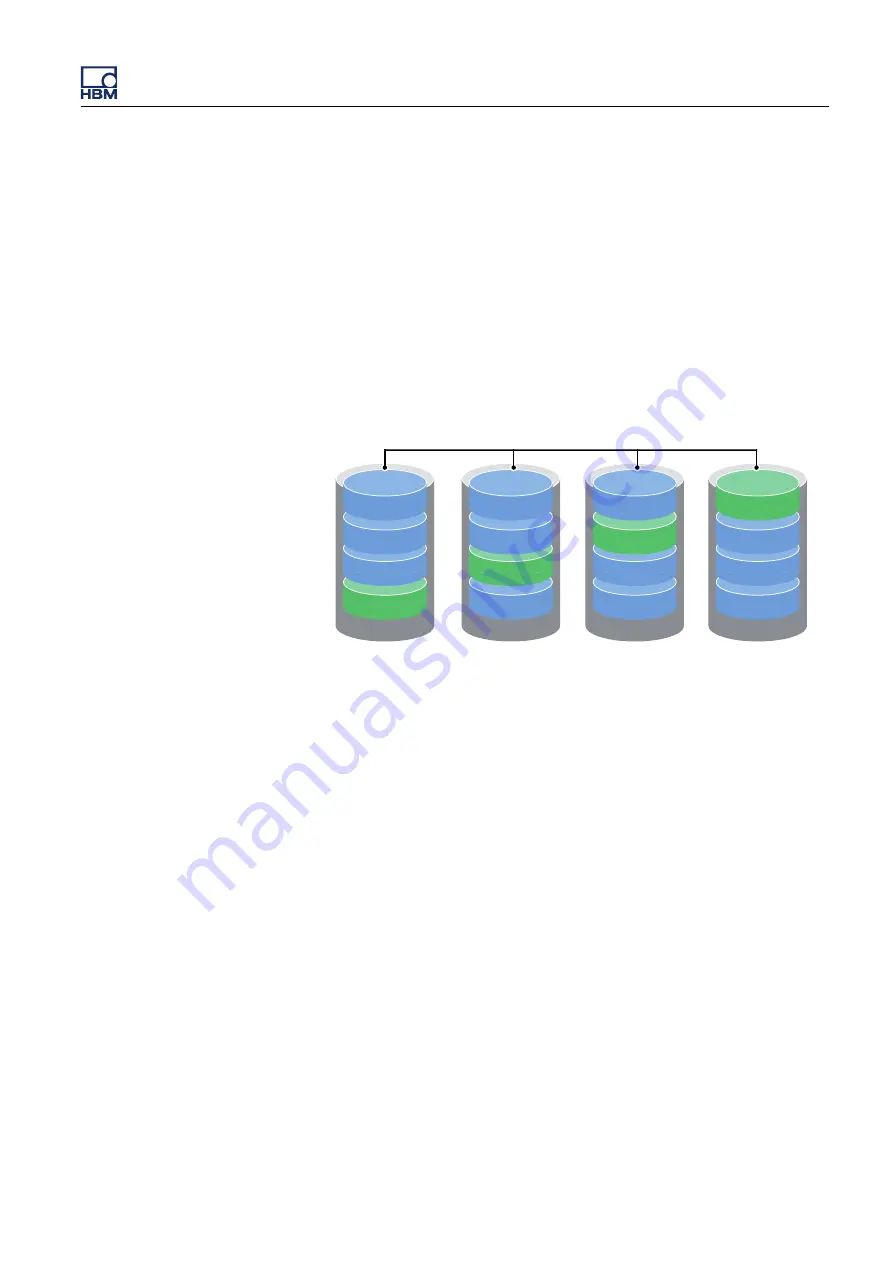
I.1.3
RAID 5 – Striping with parity
RAID 5
arrays require at least three disks. Data blocks are subdivided (striped)
and written to two (or more) drives. Parity for the stored data blocks is calculated
and stored on an additional drive. Parity is not stored on a dedicated drive but
spread across all the drives in the array. Since parity is used, a stripe set can
withstand a single disk failure without losing data. Although RAID 5 can be
achieved in software, a hardware controller is recommended to support the
parity calculations in hardware. Extra cache memory is often used on these
controllers to improve the write performance. RAID 5 is a good all
-
round system
that combines efficient storage with excellent security and decent performance.
BLOCK 1A
BLOCK 1B
BLOCK 1C
DISK 1
PARITY
BLOCK 2A
BLOCK 2B
DISK 1
PARITY
BLOCK 3A
BLOCK 3C
DISK 1
PARITY
BLOCK 4A
BLOCK 4b
DISK 1
PARITY
RAID 5
Parity across Disks
BLOCK 2C
BLOCK 3B
BLOCK 4C
Figure I.3:
RAID 5 – Striping with parity
Advantages
l
Read data transactions are very fast while write data transaction are
somewhat slower (due to the parity that has to be calculated).
Disadvantages
l
Disk failures have an effect on throughput, although this is still acceptable.
l
Complex technology requiring hardware support to efficiently calculate
parity.
GEN3i
I3763-3.1 en HBM: public
969












































